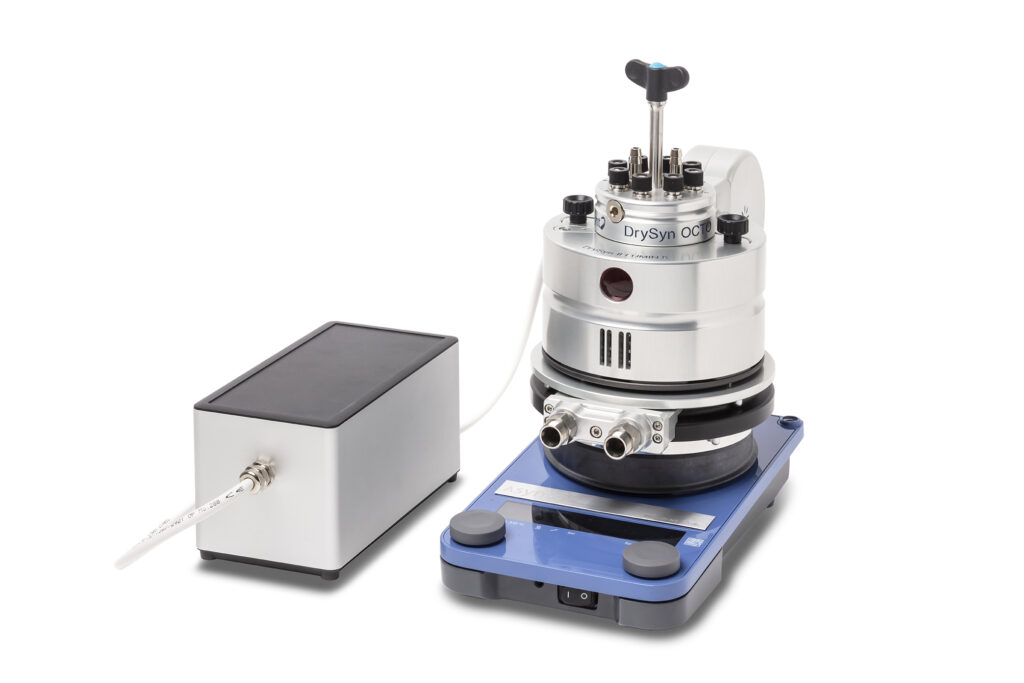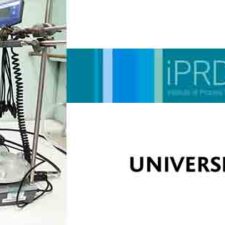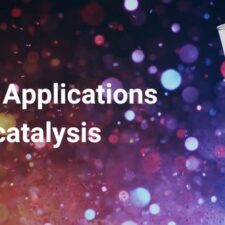Photoreactors are increasingly at the forefront of research chemistry, but what makes a truly effective reactor? In this article, we discuss the key principles of good photoreactor design, encompassing the diverse needs of researchers and industry and we’ll examine how the Asynt LightSyn range meets these needs.
The LightSyn Illumin8 allows for 8 parallel photochemical reactions.
Versatility at its Core
Photochemistry has a variety of applications so a successful photoreactor must be versatile with the ability to perform reactions at multiple possible wavelengths, different temperatures, and volumes. This versatility allows for a reactor to be used across a wide range of photochemical transformations and conditions with ease. This is something we have built into the core of our own LightSyn range of photochemistry tools.
Advanced Light Source Technology
A photoreactor’s light source needs to be precise and consistent to enable repeatable results, especially when working in parallel. LEDs are ideal for this as they can efficiently emit light at a very narrow wavelength. Asynt’s LightSyn Illumin8 features an interchangeable lighting module so that LEDs of different wavelengths can easily be switched in and out, including ultraviolet options.
Efficient Energy Distribution
There are several ways the light from the LEDs can be focused into the reaction. In our own LightSyn range we use three different methods:
- Our Illumin8 holds each vial in close proximity to the curved alumnium chamber wall that reflects light back into each reaction; this has the added benefit of ensuring each reaction vial receives the same amount of light.
- The Lighthouse has a quartz rod that runs directly from the face of the LED into the reaction, carrying the photons in a similar manner to an optic fibre for maximum efficiency.
- Last but by no means least, our PhotoFlow uses a lens to focus the light into the reaction below.
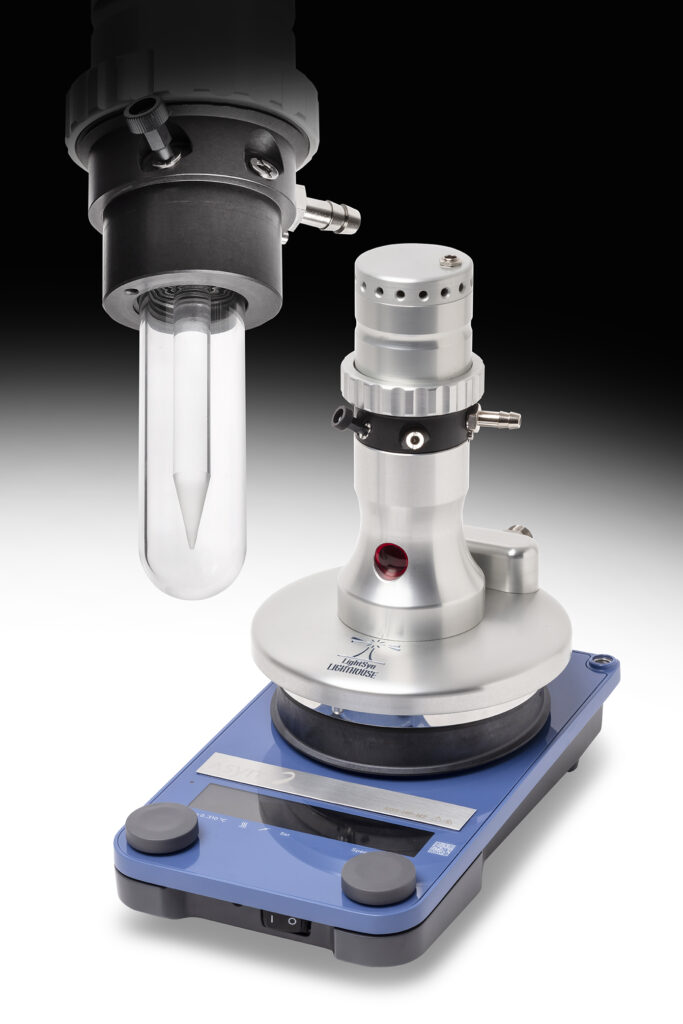 The Lighthouse uses a quartz rod to channel photons directly into the reactants.
The Lighthouse uses a quartz rod to channel photons directly into the reactants.
Robustness for Consistent Performance
Laboratory equipment must be robust to continue delivering reliable and repeatable results in such a fast-paced and potentially harsh environment. For this reason, a good photoreactor requires quality materials and precision engineering – both of which we use in the manufacture of our own LightSyn photoreactor range.
Scalable Solutions
Scalability between small-scale lab experiments or larger preparative-scale allows a good photoreactor to be used throughout the research process and ensures repeatable results over increasing volumes. This is something we kept particularly in mind when we worked together with The University of Leeds in designing the Asynt PhotoFlow modules, which allow scale up through CSTRs (continuous flow tank reactors) where up to 5 PhotoFlow modules can be added in series.
Prioritizing Safety
In any photoreactor’s design, safety must take precedence, both in how it handles chemicals and its powerful LEDs. Reaction vials should be well sealed, and measures should be taken to avoid accidental exposure to the high intensity light. Central to the design of Asynt’s LightSyn photoreactors is the incorporation of micro switches that ensure activation can only occur when fully closed.
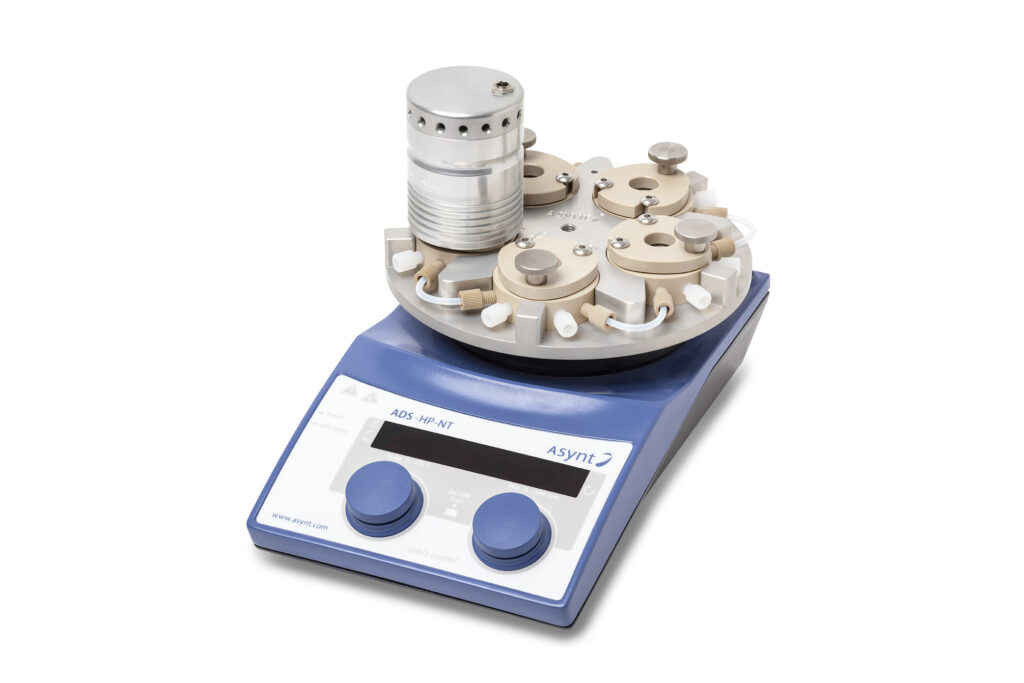 PhotoFlow modules can be added to fReactor CSTRs to provide for combined flow and photochemistry.
PhotoFlow modules can be added to fReactor CSTRs to provide for combined flow and photochemistry.
User-Friendly Design
Ultimately, no matter how advanced a photoreactor is, it must be user-friendly, high quality without being overly complicated, and effective yet efficient. By successfully incorporating all of these elements, the LightSyn range of photochemistry tools enable you to streamline your lab while improving sustainability thanks to the energy efficient designs.
Conclusion
Asynt’s photoreactor design revolves around versatility, efficiency, robustness, scalability, safety, and ease of operation. We strive to exceed the expectations of the scientific community and its industries, contributing to the advancement of photochemistry.
Discover more about our innovative products and learn more about photochemistry with us. Visit our product pages to learn more about the LightSyn range and explore our blogs for the latest in photochemical trends and applications. Let’s shape the future of photochemistry, one reaction at a time!
You’re welcome to contact us to chat about your requirements anytime – call +44 (0)1638 781709, email [email protected], or use the LIVE CHAT at the bottom right corner of your screen. We look forward to speaking with you…
